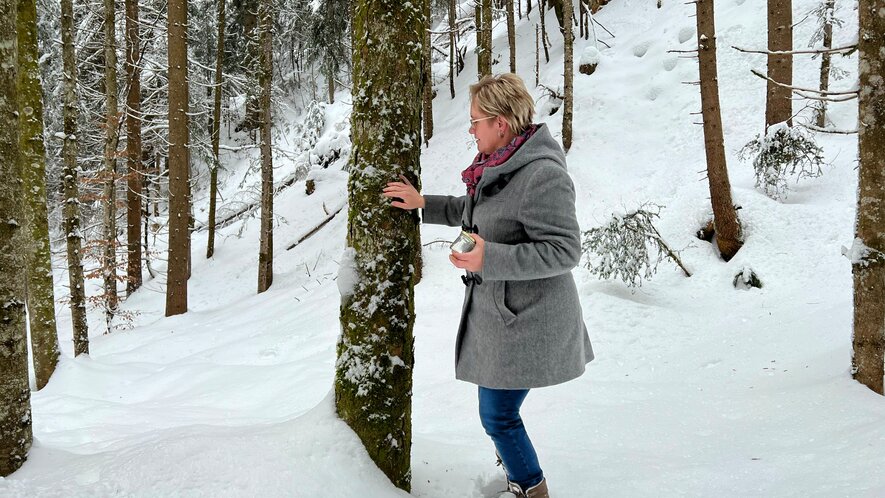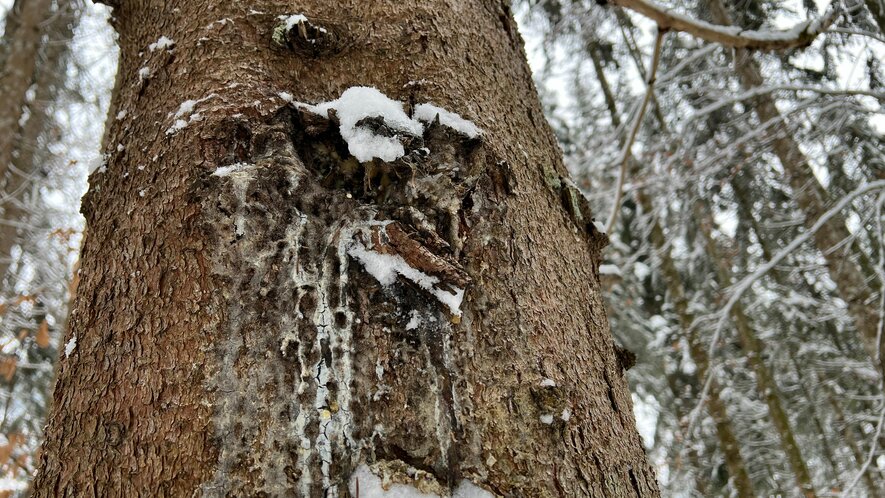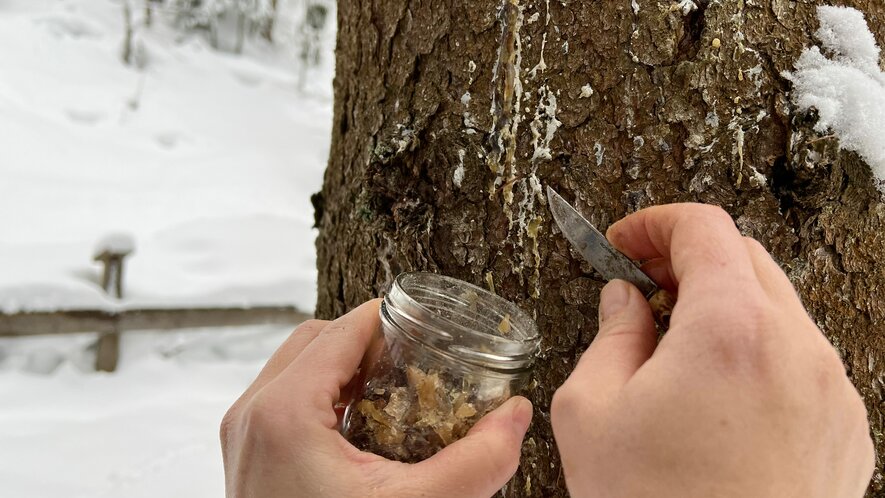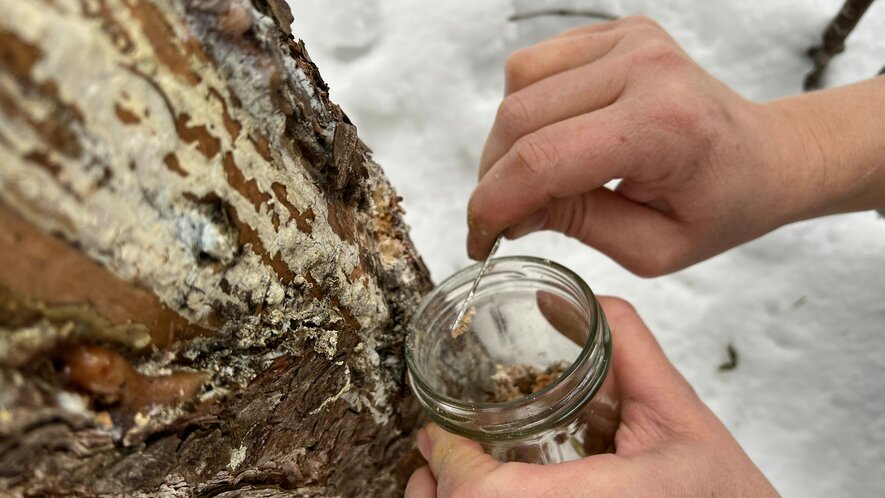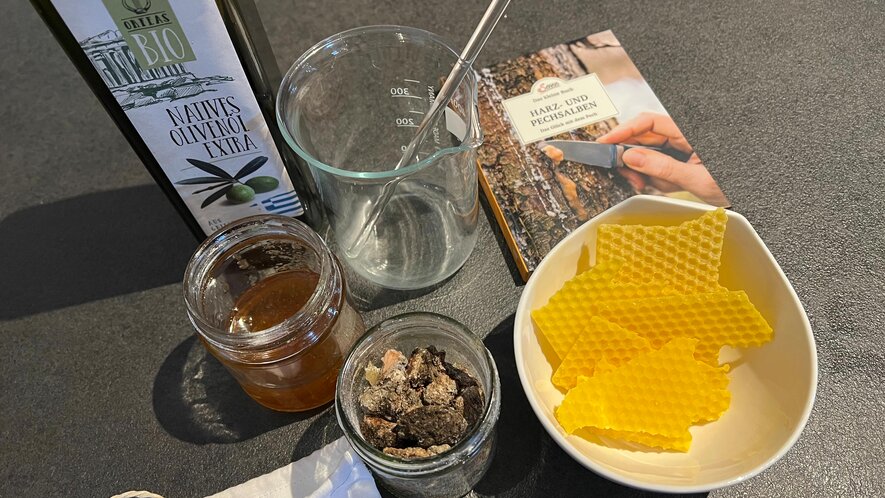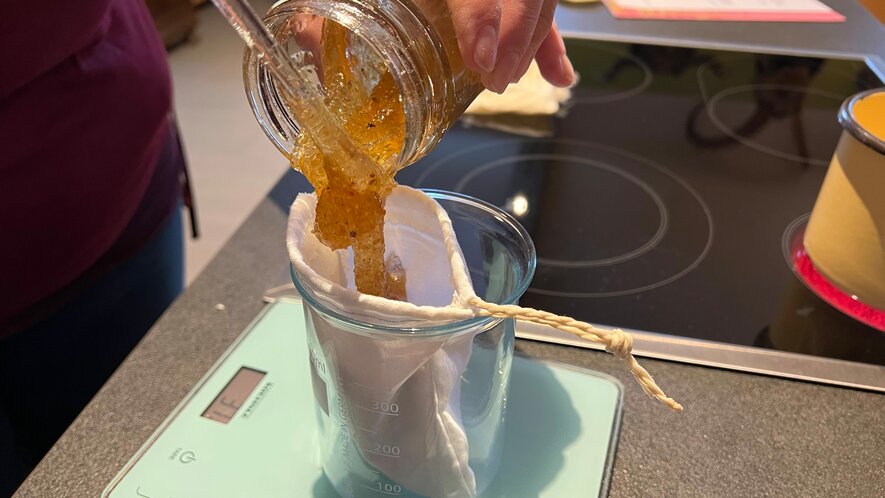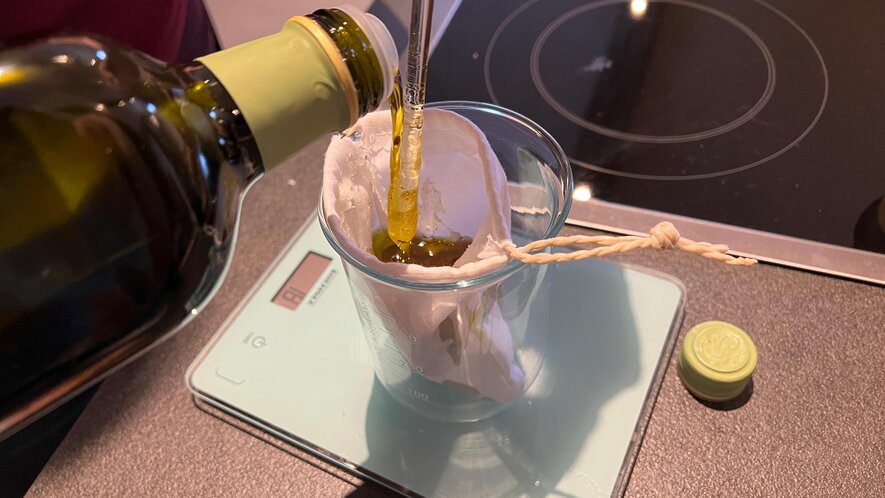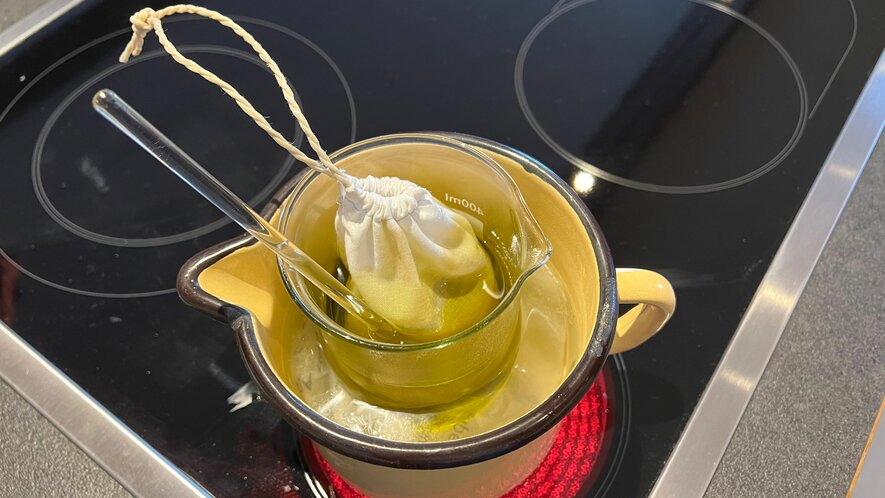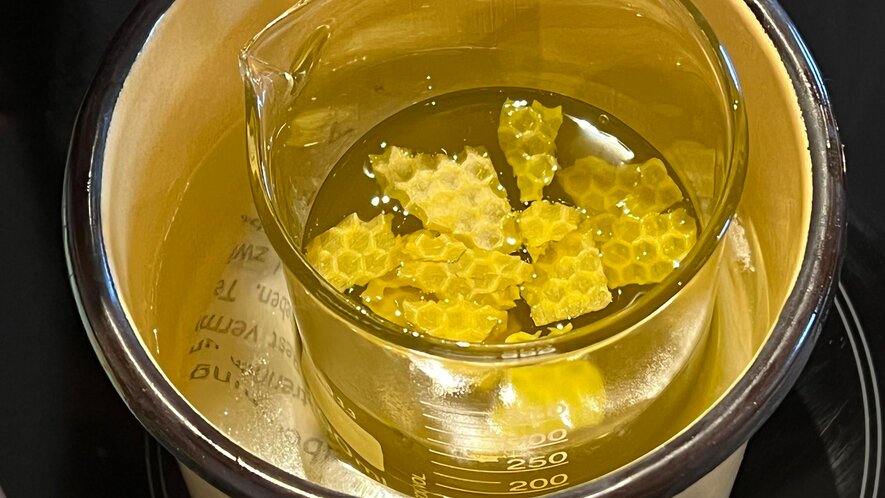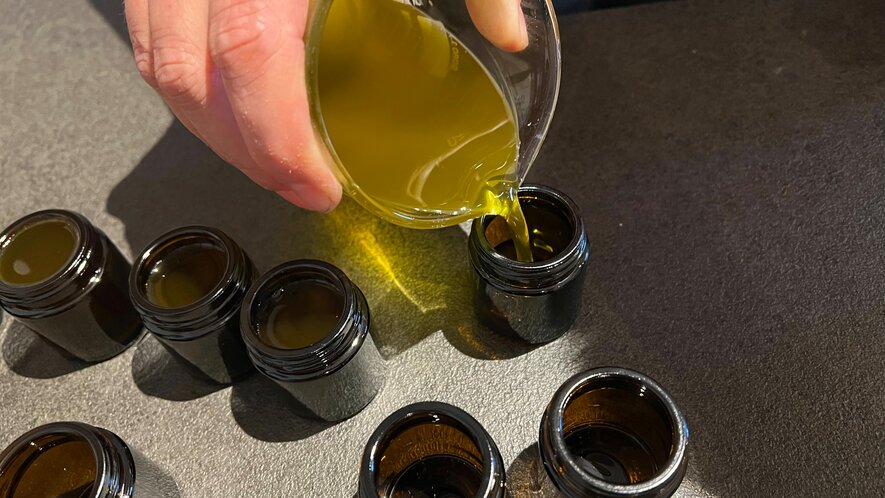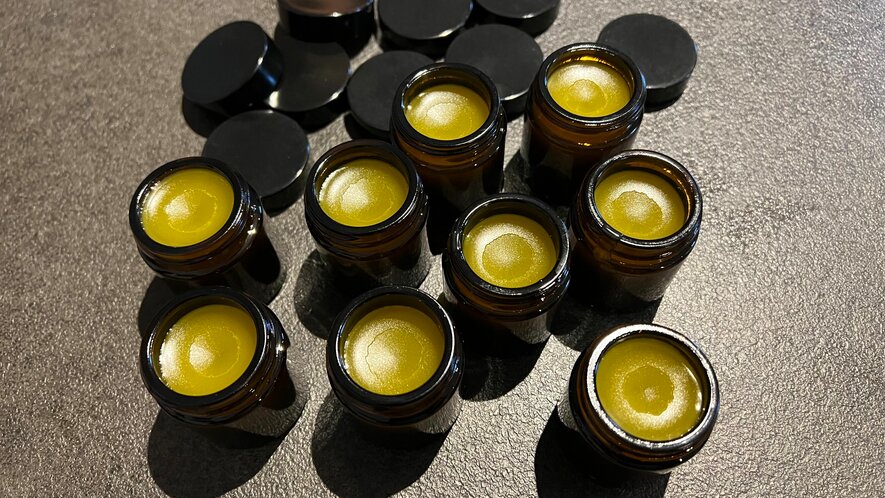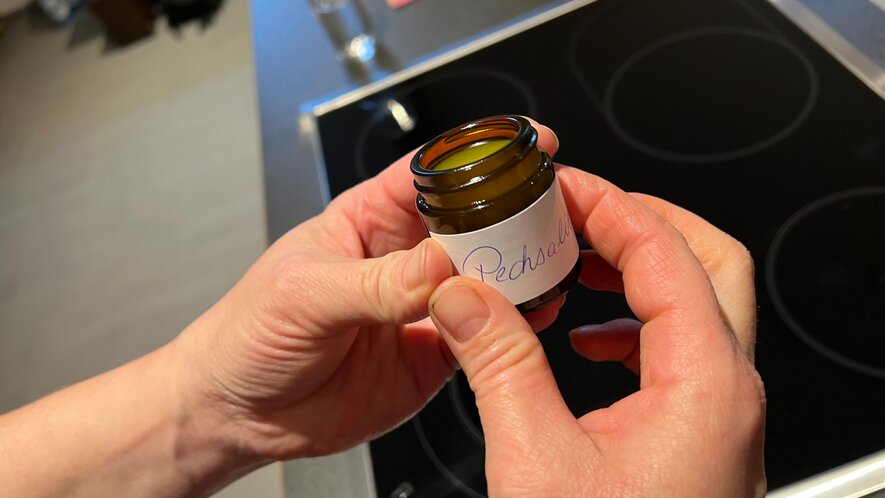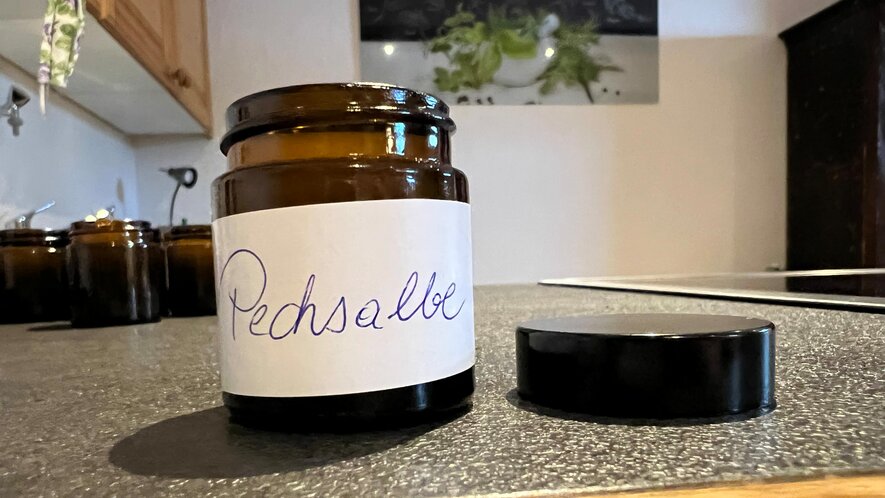The miracle cure of resin
When walking through the forests, you have definitely seen the resin that trickles out of the trunk of the trees. If a tree is wounded, it produces resin, which heals its wounds. Resin is a real miracle cure when it comes to healing wounds. We use the healing effect of it - as our ancestors already did in the 18th century.
A cream made out of resin
Togehter with Anita Widauer, TEH - practitioner, I went into the forests to collect resin from spruce trees. With the collected resin, we produce a cream ourselves. The cream is known for its positive effects on wound healing. Even our ancient ancestors have already used it.
The recipe
For the resin cream we need four ingredients: resin from spruce trees, resin from larch trees, organic olive oil and beeswax. We buy the olive oil at a regional shop, the beeswax at the local bee-keeper and we collect the two different kinds of resins in the woods. However, it is very difficult to get resin from larch trees, because you can only collect it from trees, which have already been cut down. "Usually I get the larch resin from a guy, who collects it for me from a sawmill," tells me Anita with a smile on her face. But it is also possible to use only resin from spruce trees for the cream. Depending on which resin you have.
Let's go into the woods
To collect the missing spruce resin, we go into the Wetzstein forest in Leogang. It is a real winterwonderland. We walk through the forest and look for wounded trees. Because when a tree is wounded, it produces the resin to heal itself. And that's exactly what we are looking for. If we are lucky and discover resin that trickles out of the trunk of a tree, we scratch it off with a small knife. It doesn't take us very long until we find the first wounded tree. "We just take as much as the tree can give us. At no circumstances, we wound the tree even more to get more resin", explaines Anita while she scraches off the amber-coloured resin.
Welcome to the herb kitchen
We make our way to Anita's herb kitchen and take the collected resin with us. In her kitchen, she has already prepared the neccessary utensils: a small cotton sack, a small glass container and a small bain-marie. The first thing to do, is to put the resin (approximately 60g) into the small cotton sack and hang it into the glass container. Then we add 200ml of the olive oil and put the glass container with the cotton sack into the bain marie. We heat the oil in the bain-marie very slowly for about 30 minutes. The best thing you can do is to leave the hot oil over night and to warm it again on the next day. Today, we do not have time for it, so we stir with a glass or wooden stick and try to squeeze the resin to get all the active substances out of it. Afterwards, we pour the oil through a filter, so that there are no remains in the cream. This makes it preservable. Then we put the oil, which is still in the glass container, back into the bain-marie and add the beeswax (approximately 10% of the whole beeswax). When the beeswax has melted, we can bottle the cream up in small glasses. Bevor we close them and write lables on them, we have to make sure that the cream is really cold.
Why should we use resin cream and what for?
A cream made out of resin is really special, because it contains a high percentage of active substances, which often cannot be found in medicine. Resin cream helps with curing wounds and grazes. However, it can also be used as vesicant ointment. The resin cream can be used as a disinfection against bacteria, viruses and fungal infections. Moreover it is really helpfull with cold feet, because it stimulates the circulation of blood in your body. When used on your chest, it has a positive effect on coughs. You can improve the effects of the resin cream, when adding different herbs. For example when adding pot marigold flowers, the cream improves wound healing or when adding thyme, the cream helps against cough.
Want to try it too?
For everyone who wants to produce their own resin cream, we recommend a herb workshop with Anita. Discover the secret effects of our nature and learn how to use them. And on top of it, you have the perfect souvenir for your loved ones!





